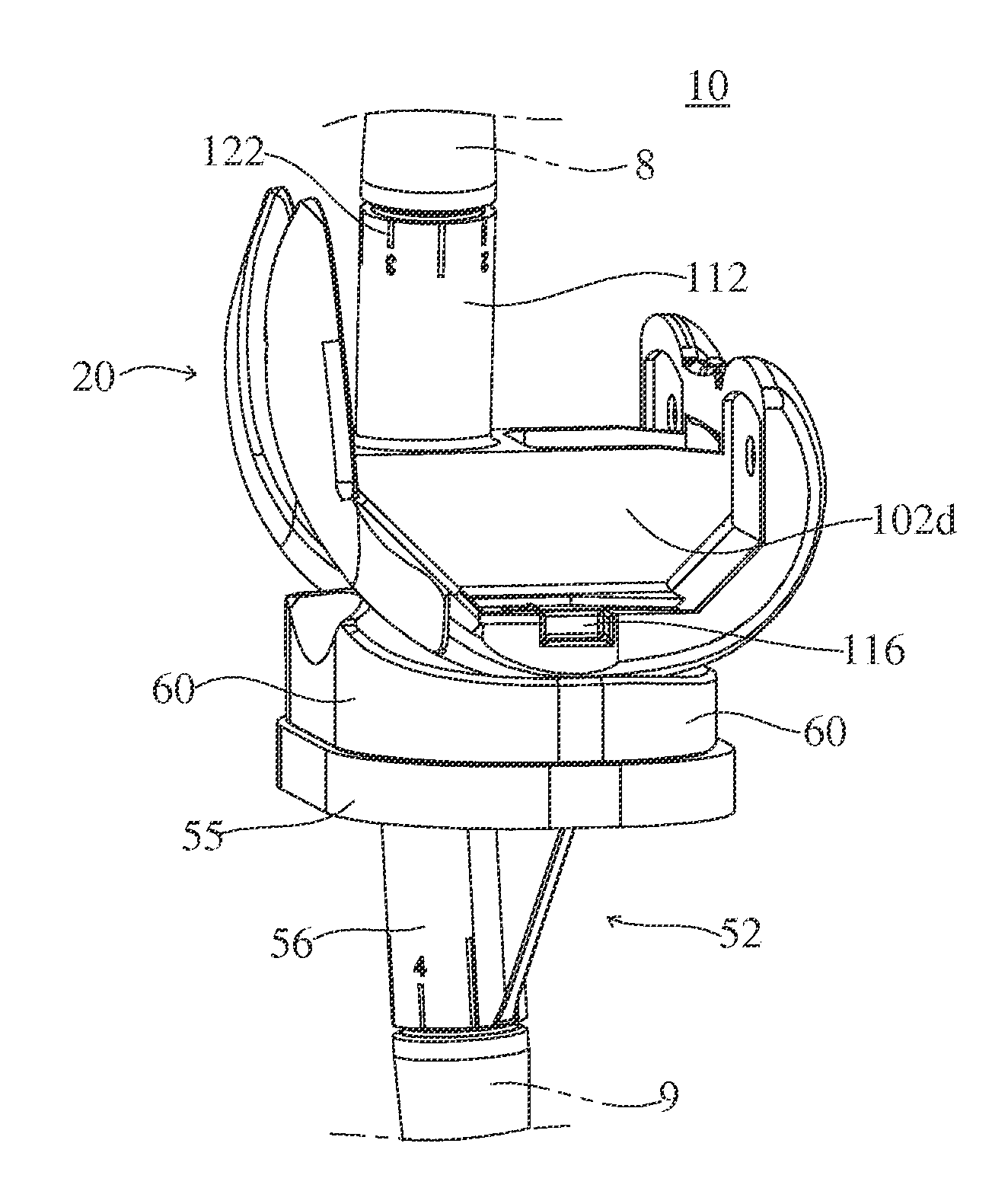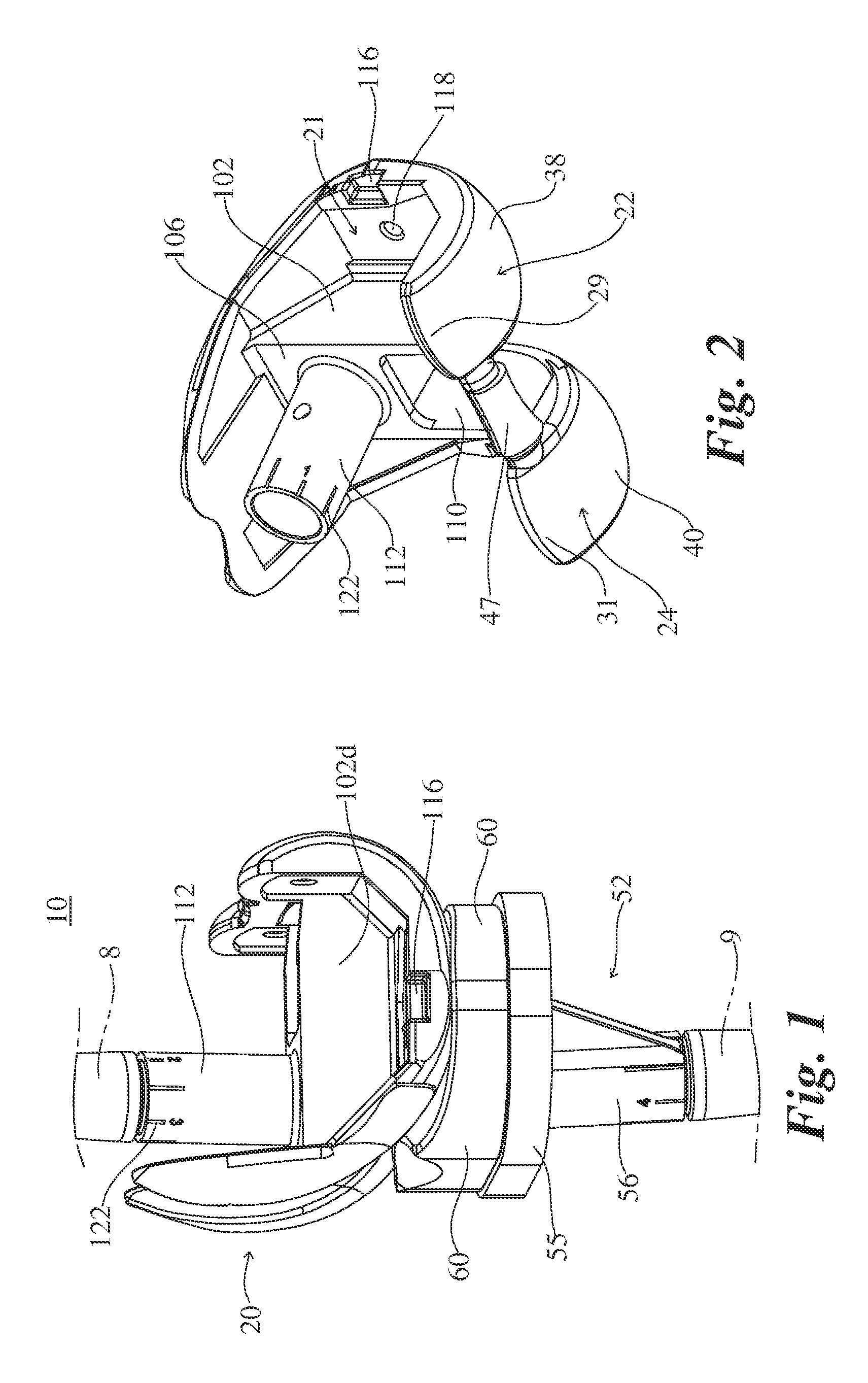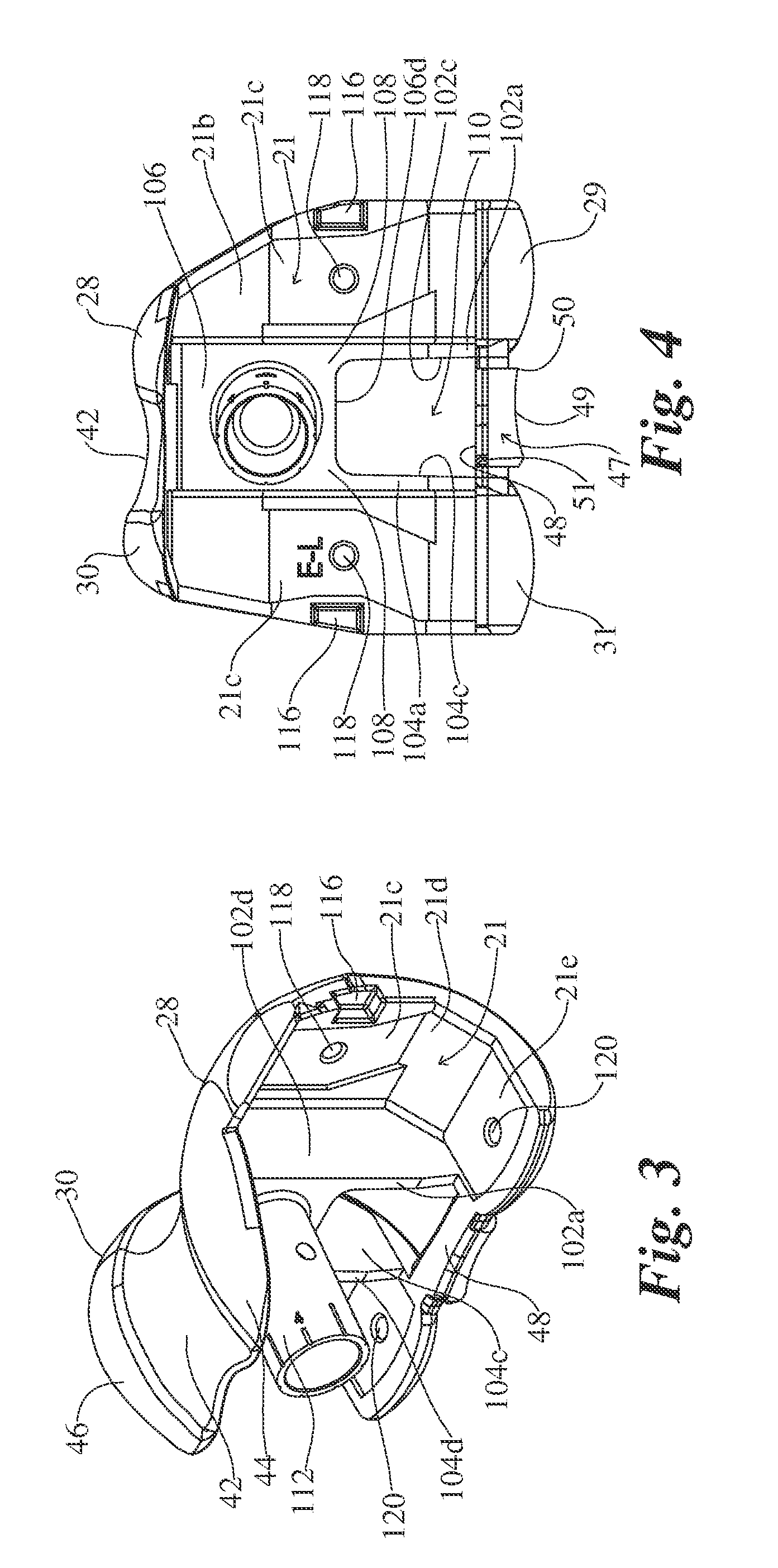Knee Revision Prosthesis With Progressive Restraint
a knee joint and prosthesis technology, applied in knee joints, knee replacement, medical science, etc., can solve the problems of prosthesis replacement, weakening or degrading the anatomy to which the primary prosthesis is attached, and the primary prosthesis may simply wear out or be damaged by patient trauma, etc., to achieve increased laxity, reduced restraint, and increased restraint
- Summary
- Abstract
- Description
- Claims
- Application Information
AI Technical Summary
Benefits of technology
Problems solved by technology
Method used
Image
Examples
Embodiment Construction
[0036]For the purpose of illustrating the invention, several embodiments of the invention are shown in the accompanying drawings. However, it should be understood by those of ordinary skill in the art that the invention is not limited to the precise arrangements and instrumentalities shown therein and described below. Throughout the specification, like reference numerals are used to designate like elements. Numerous changes and modifications within the spirit and scope of the invention will become apparent to those skilled in the art from this detailed description.
[0037]Unless otherwise defined, all technical and scientific terms used herein in their various grammatical forms have the same meaning as commonly understood by one of ordinary skill in the art to which this invention belongs. The terms varus, valgus, anterior, posterior, proximal, distal, medial, lateral, sagittal, coronal, and transverse are used herein with their conventional medical / anatomical meaning as defined, for ...
PUM
 Login to View More
Login to View More Abstract
Description
Claims
Application Information
 Login to View More
Login to View More - R&D
- Intellectual Property
- Life Sciences
- Materials
- Tech Scout
- Unparalleled Data Quality
- Higher Quality Content
- 60% Fewer Hallucinations
Browse by: Latest US Patents, China's latest patents, Technical Efficacy Thesaurus, Application Domain, Technology Topic, Popular Technical Reports.
© 2025 PatSnap. All rights reserved.Legal|Privacy policy|Modern Slavery Act Transparency Statement|Sitemap|About US| Contact US: help@patsnap.com



